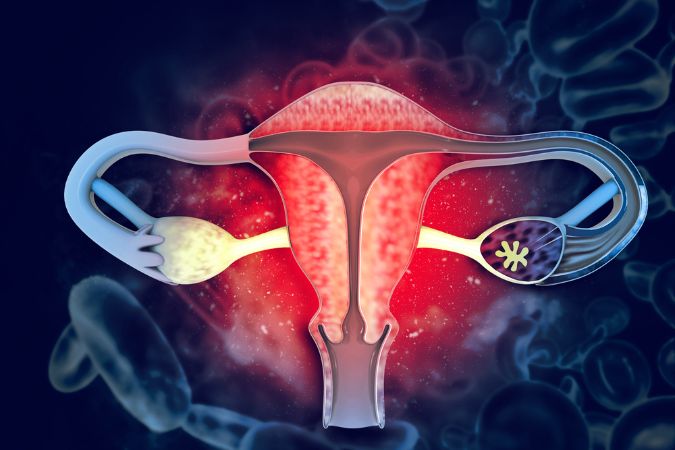You probably know that uterine polyps are fleshy growths that develop along the inner wall of your uterus and can be noncancerous or cancerous. What you may not realize is that these polyps, also called endometrial polyps, can affect fertility and your chances of getting pregnant or having children. In this article, we will discuss what uterine polyps are, how they’re diagnosed, problems they cause if left untreated (including infertility) and surgical removal options should you be diagnosed with them.
Uterine polyps are fleshy growths attached to your uterus that can range in size from just a few millimeters in diameter — no larger than a sesame seed — to several centimeters, or golf-ball-sized or bigger. These growths are usually noncancerous, but they can be precancerous or cancerous, and can spread to the lining of your uterus and surrounding tissues.
Your doctor can often identify uterine polyps with a transvaginal ultrasound, which uses high-frequency sound waves to create images of your internal organs. A more detailed examination, sometimes called a hysteroscopy, allows your doctor to see the lining of your uterus, ovary and pelvic cavity, which can help determine whether your uterine polyps are cancerous. During a hysteroscopy, your doctor will insert a thin telescope called a hysteroscope into your uterus through your vagina and cervix. Your doctor can also perform a biopsy of a uterine polyp by inserting a tube-like instrument called a suction catheter inside your uterus to remove a small piece of the tissue for lab testing.

You’re more likely to have uterine polyps in your 40s and 50s, when you’re approaching menopause (perimenopause) or going through it (postmenopause). They can also be caused by certain medications, such as tamoxifen, used to treat breast cancer, and hormone therapy, such as estrogen replacement.
In most cases, a symptom of uterine polyps is abnormal bleeding. You might also experience bloating, pelvic pain or discomfort, or trouble with urination and bladder control. Some women with uterine polyps don’t have any symptoms at all, and the growths are discovered only during an exam for another condition or when you’re having fertility issues.
A symptom that isn’t related to uterine polyps is abnormal weight gain. It’s more common for weight gain to be related to other gynecologic conditions, such as a large ovarian cyst or fibroids. In some women, asymptomatic uterine polyps can disappear on their own without treatment. But if you’re concerned about them, your doctor will probably recommend that you have them removed. You can expect to have surgery that involves placing a small incision through your vagina and cervix or removing the entire uterus, which is called a hysterectomy. Generally, you can expect the procedure to be successful. Occasionally, however, the uterine polyps may grow back and need to be removed again. That’s why it’s important to stay in touch with your gynecologist for regular checkups. You can lower your risk of uterine polyps by maintaining a healthy weight and getting regular screening tests, such as an annual ultrasound or pap test.









